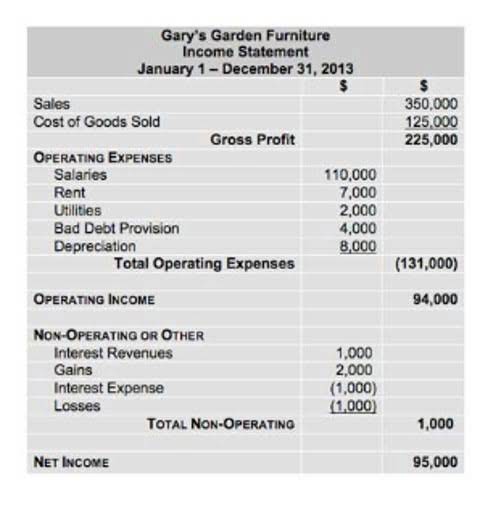
Simply put, the decision-maker can take a ‘centralized decision’ on behalf of those below them in the chain or ‘decentralize the decision’ to a level below. Reinertsen [4] emphasizes the importance of “balancing centralization and decentralization.” Derived in part from that work, the considerations in Table 1 can help with identifying the best course of action. Effective decision making, reengineered to be connected, contextual and continuous, accounts for uncertainty and improves our ability to add clarity to once opaque considerations. If you are able to handle more uncertainty than others, comfortably and with skill, then you have the ultimate advantage.
- The impetus for this is understandable—cross-cutting decisions, in particular, are the culmination of smaller decisions taking place elsewhere in the company.
- You may get to this stage, and have a clear ‘winner’ but still feel uncomfortable.
- This framework is particularly beneficial in rapidly changing environments like technology and business, where learning from past decisions and adapting is crucial.
- That often means involving as many people as possible in the outcome—something that, paradoxically, in the end will enable the decision to be implemented more speedily.
- But decision-makers should be aware that value flow may be blocked while a decision is deferred.
- Most of us are eager to tie on our superhero capes and jump into problem-solving mode — especially if our team is depending on a solution.
- But in general, machines and humans each have a role in effective decision making.
Remember that market potential is really about what you can reasonably expect from your future revenue opportunities. Understanding your market potential includes, but is not limited to, the overall size, shape and direction of your market. Combined, these elements help companies evaluate the attractiveness of different strategic options and prioritize future investment in any market conditions (also see our article on The Changing Game of Strategy).
Big bets—facilitate productive debate
Group decision-making is a must when dealing with sensitive topics or subjects that a lot of people have an interest in. A substantial part of what stakeholder decision making framework management means is the need to share accountability. Frameworks help a great deal in organizing people and giving clarity on objectives.

In practical terms, this might mean drawing a bright line between the portion of a meeting dedicated to decisions from the parts of a meeting meant to inform or discuss. Any recurring meetings (particularly topic-focused ones) where the nature of the decision isn’t clear are ripe for a rethink—and quite possibly for elimination. Escalating decisions can also reflect deeper challenges in the organization’s culture. For example, if an underling learns that over time when the boss says, “You should make that decision,” she really means, “so long as you make the same decision I would have made,” then decisions are sure to bubble up.
Strategic Decision-Making and Its Importance in Project Management
These vested interests are often not overtly expressed, but may be a crucial blockage. Because they are not overtly expressed, it is hard to identify them clearly, and therefore address them, but it can sometimes be possible to do so by exploring them with someone outside the process, but in a similar position. Take some time to gather the necessary data to inform your decision, even if the timescale is very tight.
The Delphi Method helps leverage collective wisdom, minimize biases, and generate well-informed decisions, particularly in complex or uncertain situations. Cost-Benefit Analysis is an economic framework that quantifies the costs and benefits of different options to ascertain the most favorable decision. As it places a strong emphasis on logical and systematic analysis, this model is beneficial for decisions where there is a clear problem with defined alternatives, such as operational or technical decisions in business scenarios. The model presumes perfect information availability, allowing decision-makers to evaluate options methodically to select the optimum solution.
The 3 Primary Dimensions of Decision-Making in the Workplace
The top team will decide what decisions are big bets, where to appoint process leaders for cross-cutting decisions, and to whom to delegate. Senior executives also serve the critical functions of role-modeling a culture of collaboration and of making sure junior leaders take ownership of the delegated decisions. In response, the company broke down complex processes into key decisions, clarified roles and responsibilities for each one, defined inputs and outputs for each process, and made one person accountable for each outcome. After conducting pilots in several countries, executives used two-day workshops to roll out the process redesign.
The project manager must consider the after-effects of his decision and take the necessary steps to rectify any hurdles that arise. The key to success is to play the hand we’re dealt with as though it’s the hand we wanted. A wise player can play a weak hand and still win the game by making rational decisions one after another.
Critically, this isn’t about reengineering every decision; it’s about applying this reengineered thought process to the most important and impactful decisions — those that can’t be made effectively with traditional approaches. Effective decision making requires business leaders to reframe what is essential, who or what is involved — and rethink how to leverage data and analytics to improve decision making. Effective decision making in today’s complex and disrupted business environments must be connected, contextual and continuous to drive good outcomes. Project managers must consider alternative solutions to support the initial decision for the optimum utilization of resources.
And while it’s motivating for a knowledge worker to be empowered to make the decisions needed to move forward, empowerment can be sustained only when those who make these decisions act responsibly. When decision-making authority is distributed, https://www.bookstime.com/ it becomes necessary for everyone to understand their roles and responsibilities, as well as the organization’s values, purpose, and mission. Without such clarity, executing with competence and yet moving in the wrong direction is possible.